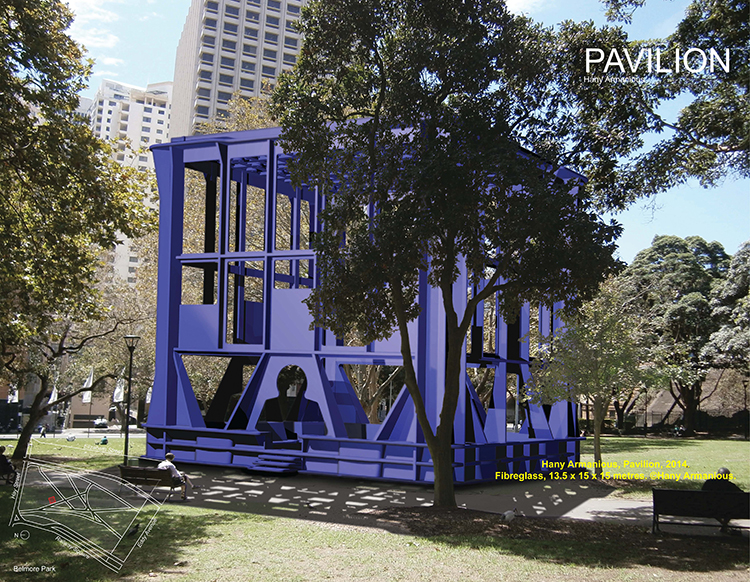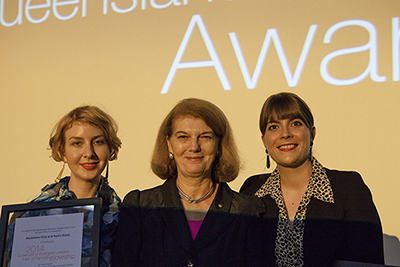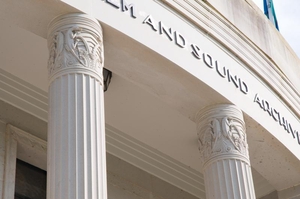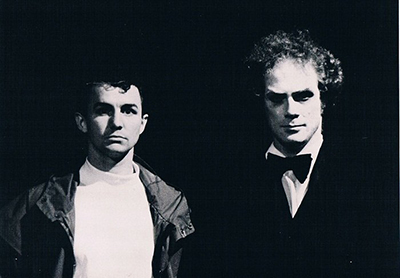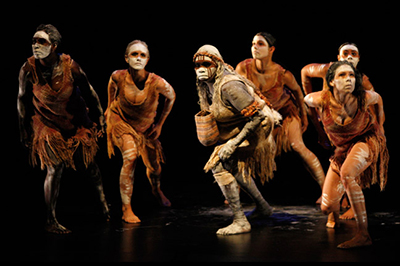Screen Australia backs 12 projects with $12m
EXTRA >>
THE LATEST round of production investment by Screen Australia devotes more than $12 million for 12 projects, aiming to generate more than $80 million worth of production for the Australian industry.
“From popular adaptations and classic favourites, to innovative original content, this funding round supports a true breadth and depth of Australian storytelling talent across all forms of narrative content,” said Screen Australia head of production, Sally Caplan.
“We have backed some of our great contemporary writers, directors and producers, alongside some exciting new voices. The projects target audiences as diverse as Australia is today, with projects which are ambitious, risk-taking and culturally important, revealing we have no shortage of great stories to tell.
“Who could resist Blinky Bill, the story of music biz legend Molly Meldrum, and a neo cold-war thriller set in Canberra?”
Television drama Secret City is based on the best-selling novel The Marmalade Files and upcoming sequel The Mandarin Code. Set in an atmosphere of rising tension between China and America, the six-part series follows Helen, a political journalist, who uncovers a conspiracy which leads her into the underground world of political deception with deadly consequences. From Matchbox Pictures, the political thriller will be adapted for screen by writers Belinda Chayko, Matt Cameron, Marieke Hardy, Alice Addison, Tommy Murphy, Kris Mrksa and Greg Waters, and producer Joanna Werner (Dance Academy) for Foxtel.
An old favourite will be revived in The Blinky Bill Movie. From Greenpatch Productions, the film will reacquaint old and engage new audiences with the iconic Australian koala. The big-screen adaptation follows Blinky (Ryan Kwanten), as he sets out to find his missing father and gathers friends, Nutsy and Jacko, along the way.
Written by Fin Edquist, produced by Barbara Stephen and directed by Deane Taylor, the film presents cultural qualities that will introduce a modern version of this Australian children’s literary icon whose legacy extends back to the 1930s.
Original children’s television series My Life in 50 Words or Less from Big Chance Films follows five Indigenous children venturing a long way from home to the city to pursue their dreams. For the ABC, the 14-part series will be written by Liz Doran, Jon Bell, Nakkiah Lui, Josh Mapleston and Kristen Dunphy, produced by Joanna Werner and Miranda Dear, and directed by Rachel Perkins.
Also appealing to a youth audience and based on the award-winning animated television series of the same name comes Dogstar: Christmas in Space from Media World Pictures for the Nine Network. The Christmas adventure telemovie will be written by Philip Dalkin and Doug MacLeod, produced by Colin South, and directed by Scott Vanden Bosch.
Theatrical documentary The Guadagnini Project, by writer/director Scott Hicks (Shine) and producer Kerry Heysen from Fiddlestick Films, journeys into a world of rarefied musical instruments and the dealers, philanthropists and musicians who seek them out.
Molly is a television drama based on the life of well-known Australian music aficionado Ian ‘Molly’ Meldrum. From M4 Entertainment with writers Matt Cameron and Liz Doran, producers John Molloy and director Kevin Carlin, this two-part telemovie will explore the humble beginnings of Molly’s life from Quambatook to his rise to become one of the most powerful names in Australian music. It will screen on the Seven Network.
Also for the small screen, four-part series telemovie The Principal is a gritty drama revolving around a high school in Sydney’s tough south-west. From Essential Media and Entertainment for SBS, the program will be written by Kristen Dunphy and Alice Addison, produced by Ian Collie and directed by Kriv Stenders (Red Dog).
From Goalpost Pictures and New Zealand’s Pukeko Pictures comes a unique six-part high-concept genre series for the ABC. This innovative science-fiction television series, ProjectCM (working title), follows two estranged Indigenous brothers at a crossroads and a community struggling to co-exist with non-human creatures living among them. The series is a New Zealand and Australian co-production, written by Jon Bell, Jonathan Gavin and Michael Miller, and produced by Rosemary Blight with Ryan Griffen, Lauren Edwards and Angela Littlejohn.
Lightstream Pictures will receive funding for the feature thriller 2:22, about Dylan Boyd, an air traffic controller whose life is derailed following a series of uncanny events all taking place at 2:22pm, which threaten the life of the woman he loves. Paul Currie will write, produce and direct the film, along with writer Todd Stein and producer Steve Hutensky.
Acclaimed theatre writer-director Simon Stone makes his feature debut, with producers Jan Chapman and Nicole O’Donohue, on The Daughter, about a man who returns home to uncover a long-buried family secret, and while attempting to right the wrongs of the past, his actions threaten to shatter the lives of those he left behind years before. The film stars Geoffrey Rush and Ewen Leslie.
Writer-director Abraham Forsythe and producers Jodi Matterson and Ben Latham-Jones will be funded for the feature film Down Under. From Eddie Wong Films with Ealing Studios and Londinium, the comedy is set during the Cronulla race riots.
Completion funds were also provided to Ticket to Ride for their project The Little Death, from writer-director Josh Lawson and producers Jamie Hilton, Michael Petroni and Matt Reeder.
FEATURE FILMS: PRODUCTION FUNDING
2:22
Lightstream Pictures Pty Ltd
Producers Paul Currie, Steve Hutensky
Executive Producers Bruce Davey, David Whealy, Bill Mechanic, Jackie O’Sullivan
Director Paul Currie
Writers Todd Stein, Paul Currie
Australian Distributor Icon Film Distribution
International Sales Good Universe International
Synopsis Dylan Boyd’s life is permanently derailed when an ominous pattern of events repeats itself in exactly the same manner every day and threatens the life of the woman he loves.
THE BLINKY BILL MOVIE
Greenpatch Productions Pty Ltd
Producer Barbara Stephen
Executive Producer Jim Ballantine
Director Deane Taylor
Writer Fin Edquist
Australian and New Zealand Distributor Studio Canal
International Sales Studio 100 International BV
Synopsis A young and mischievous koala embarks on a journey across the wild and dangerous outback in the hope of finding his missing father, but discovers that there’s more to being an adventurer than meets the eye.
THE DAUGHTER
Fate Films Pty Ltd
Producers Jan Chapman, Nicole O’Donohue
Writer/Director Simon Stone
Australian Distributor Roadshow Films
International Sales Mongrel International
Synopsis A man returns to his hometown and unearths a long-buried family secret. As he tries to right the wrongs of the past, his actions threaten to shatter the lives of those he left behind years before. Will they survive the truth?
DOWN UNDER
Eddie Wong Films Pty Ltd, Ealing Studios, Londinium
Producers Jodi Matterson, Ben Latham-Jones
Executive Producers Greg McLean, Abraham Forsythe
Writer/Director Abraham Forsythe
Australian Distributor Studio Canal
International Sales Embankment Films
Synopsis The first comedy to be set during a race riot.
FEATURE FILMS: COMPLETION FUNDING
THE LITTLE DEATH
Ticket to Ride Pty Ltd
Producers Jamie Hilton, Michael Petroni, Matt Reeder
Executive Producer Phil Hunt, Compton Ross, Josh Pomeranz, Viv Scanu and Stephen Boyle
Writer/Director Josh Lawson
Australian Distributor Hopscotch/eOne Entertainment
International Sales Level K
Synopsis Featuring an ensemble of breakthrough talent, The Little Death marks the arrival of Australian writer-director Josh Lawson, presenting an edgy sex comedy and a warm-hearted depiction of the secret lives of five suburban couples living in Sydney. Lawson's searing and sometimes shocking screenplay weaves together a story that explores a range of sexual fetishes and the repercussions that come with sharing them.
THEATRICAL DOCUMENTARY
THE GUADAGNINI PROJECT
Fiddlestick Films Pty Ltd
Producer Kerry Heysen
Executive Producer Timothy White
Writer/Director Scott Hicks
Australian Distributor Sharmill Films
Synopsis A journey into a world of rarefied instruments and the dealers, philanthropists and musicians who seek them out.
TELEVISION: ADULT DRAMA
MOLLY
M4 Entertainment
Producer John Molloy
Executive Producers Michael Gudinski, Mark Morrissey
Director Kevin Carlin
Writers Matt Cameron, Liz Doran
Broadcaster Seven Network
Domestic/International Sales Mushroom Pictures
Synopsis At a time when Australia was finding her voice, Molly Meldrum helped us find the music.
THE PRINCIPAL
Essential Media & Entertainment
Producer Ian Collie
Director Kriv Stenders
Writers Kristen Dunphy, Alice Addison
Broadcaster SBS
Domestic/International Sales SBS Distribution, DCD Rights
Synopsis A gritty adult drama that revolves around a high school in Sydney’s tough south-west where life’s lessons are more often handed down on the streets than in the classroom.
PROJECT CM (working title)
Goalpost Pictures Australia Pty Ltd & Pukeko Pictures
Producers Rosemary Blight, Ryan Griffen, Angela Littlejohn & Lauren Edwards
Executive Producers Sally Riley, Kylie du Fresne, Ben Grant, Martin Baynton, Adam Fratto Writers Jon Bell, Jonathan Gavin, Michael Miller
Broadcaster ABC Television
Domestic Sales eOne Entertainment
International Sales Red Arrow International GmbH
Synopsis As a community struggles to co-exist with non-human creatures living amongst them, two estranged brothers find themselves at a crossroads.
SECRET CITY
Matchbox Productions Pty Ltd
Producer Joanna Werner
Executive Producer Penny Chapman
Writers Belinda Chayko, Matt Cameron, Marieke Hardy, Alice Addison, Tommy Murphy, Kris Mrksa, Greg Waters
Broadcaster FOXTEL
Domestic/International Sales Universal Media Studios International Ltd
Synopsis Amidst rising tension between China and America, senior political journalist, Harriet Dunkley, pursues a long-buried and exposing secret, leading to assassination attempts, suicide and murder. Beneath the placid façade of Canberra, she uncovers a ‘secret city’ of high-level Australians corrupted by the competing super-powers.
TELEVISION: CHILDREN’S DRAMA
DOGSTAR: CHRISTMAS IN SPACE
Media World Pictures Pty Ltd
Producer Colin South
Director Scott Vanden Bosch
Writers Philip Dalkin, Doug MacLeod
Broadcaster Nine Network
Domestic/International Sales DARO Film Distribution
Synopsis In space, no one can hear you open your presents.
MY LIFE IN 50 WORDS OR LESS
Big Chance Films Pty Ltd
Producers Joanna Werner, Miranda Dear
Executive Producers Darren Dale, Joanna Werner
Director Rachel Perkins
Writers Liz Doran, Jon Bell, Nakkiah Lui, Josh Mapleston, Kristen Dunphy
Broadcaster ABC Television
Domestic/International Sales Australian Children’s Television Foundation
Synopsis A long way from home, five Indigenous kids come to the city to explore their dreams. For some it’s the opportunity of a lifetime, for others it’s a last chance. For all of them, family is the last thing they expect to find.
ends

 How to resolve AdBlock issue?
How to resolve AdBlock issue? 